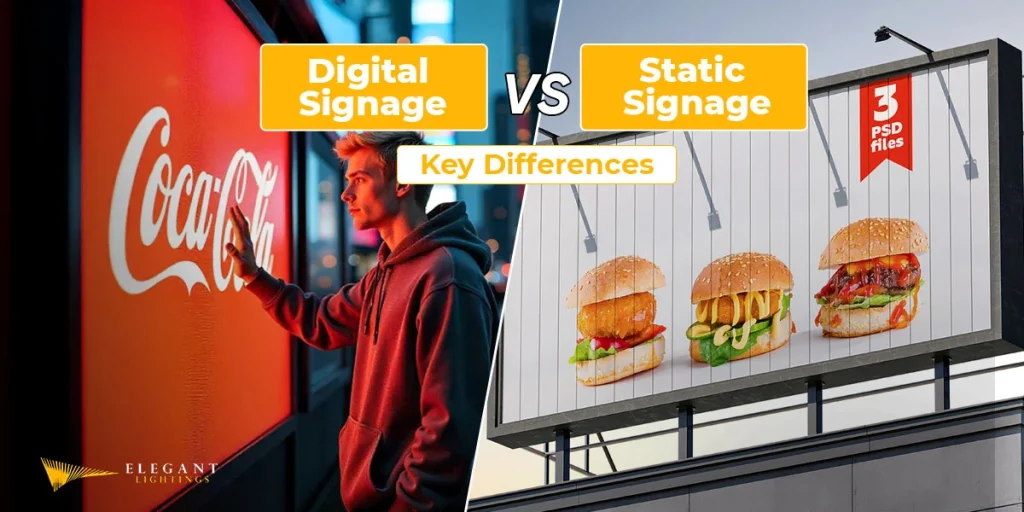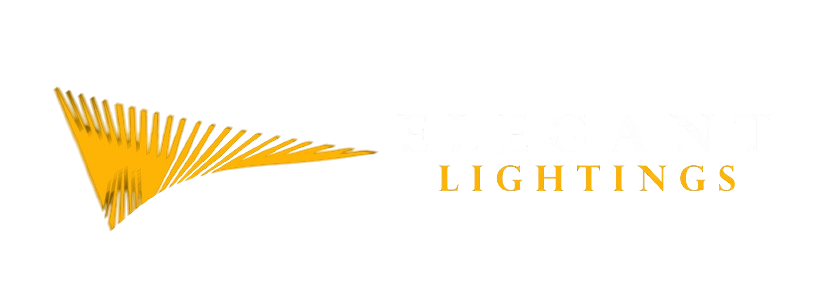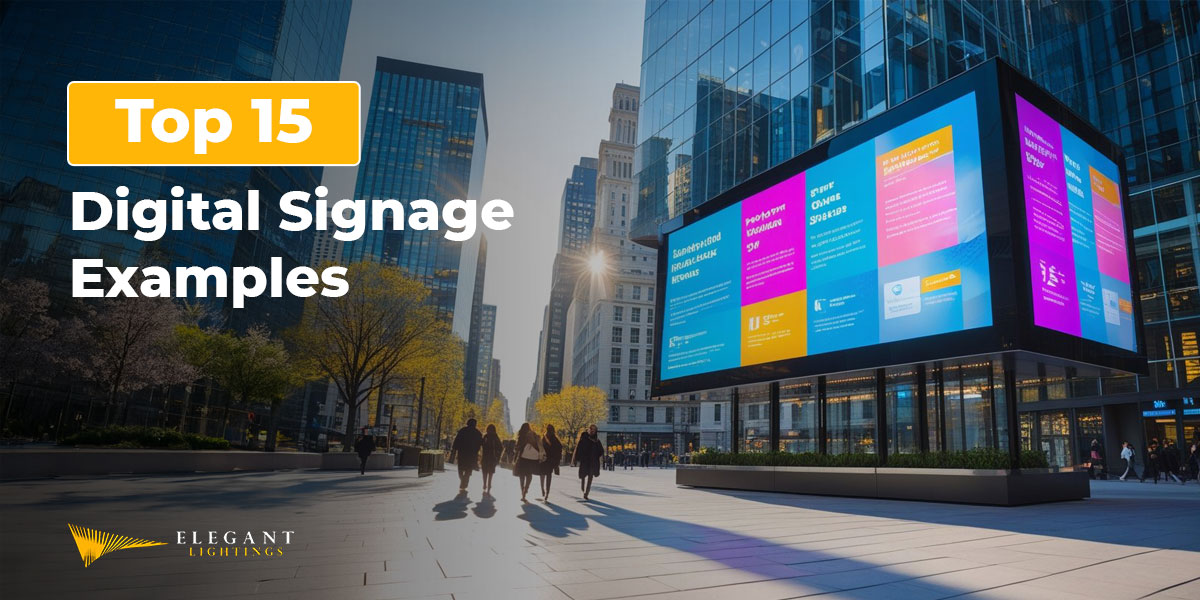
Did you know that most of the businesses across are ditching static signage to pivot to digital signage?
What's on this page:
And it’s working:
Studies are indicating that digital signage is leading to more engagement, better marketing, and enriching customer experiences!
But how exactly is digital signage different from static signage?
Is it really a good idea to switch to digital signs?
And how much money will it cost anyway?
In this blog, I’ll walk you through the pros and cons of digital signage and static signage to help you decide which one is right for you!
Let’s dive in…
Digital Signage vs. Static Signage: Table of Differences
- TL;DR: Table of Differences – Digital Signage vs. Static Signage
- What is Digital Signage?
- What are the Pros of Digital Signage?
- What are the Cons of Digital Signage?
- What is Static Signage?
- What are the Pros of Static Signage?
- What are the Cons of Static Signage?
- Key Differences Between Digital Signage vs Static Signage
- Connect with Elegant Lightings to Find Your Ideal Signage Solution
- Digital Signage vs Static Signage: FAQs
TL;DR: Table of Differences – Digital Signage vs. Static Signage
In a rush to light up your marketing approach? I’ve got you covered!
Here’s a table capturing the key differences between digital and static signage:
| Feature | Digital Signage | Static Signage |
| Dynamic Content | Yes | No |
| Analytics | Yes | No |
| Remote Control | Yes | No |
| Brightness Control | Yes | No |
| Initial Cost | High | Low |
| Long-Term Savings | High | Low |
What is Digital Signage?
Digital signage is a method that harnesses the power of cutting-edge LED technology to display vibrant messages. You can use digital signage to show vivid, multimedia content, including images, text, videos and more!
It’s the modern form of static or printed signage that helps you engage your audience with moving and engaging displays.
Best For: Anyone who needs flexibility in the type of content being displayed or wants real-time control over the content.
Digital Signage Benefits
More and more businesses are ditching static signage in favor of next-generation digital signage due to a variety of benefits that it offers.
Let me walk you through some of them:
1. Dynamic Content
The key strength of digital signage lies in its ability to show dynamic, changing content.
This means you can replace the image of a car with a video of the car being driven on different terrain.
This will empower you to experiment with different types of content surrounding your product, and also help you communicate more information in the same amount of space!
2. Real-Time Control
Digital signage is usually controlled centrally through software.
This means you can operate several digital signs for businesses in real-time from a control hub.
However, it also means you can change your content based on the engagement statistics!
This makes it perfect for:
- Marketing agencies
- Owners of signage spaces
- Enterprises that have their own signage space on their buildings
3. Enhanced Customer Engagement
The 21st-century customer doesn’t prefer boring, static images.
They want to see movement, experience how a product can help them, and watch it in action!
And that’s exactly what digital signs bring to the table:
They help you A/B test your ads in real time, change the content based on user response, and thus get more customer engagement!
4. Promotes Personalization
As we’ve seen, digital signage is extremely versatile.
It can show your product in different contexts, spaces, and environments.
But another exciting feature of digital signage is personalization!
This means you can track the nature of the audience at any given time and change your content with the touch of a button.
This will help you deliver tailored experiences to your target audience!
5. Customer Behavior Analytics
One of the digital signage benefits I like the most is its ability to display information and gather data at the same time!
You can easily track the number of people who pass by your digital signage, the number who stop to examine it, and the number who actually interact with it.
The effect of digital signage on your shoppers’ behavior will thus help you understand and refine your strategy for maximum engagement and conversion!
Cons of Digital Signage
While digital signage has its strengths, it also comes with certain limitations. Let’s briefly explore some of the challenges you might face with digital signs :
1. Higher Initial Investment
Digital signage uses very sophisticated technology, which means it’ll also be more expensive to implement.
However, you can easily expect to recover the cost of digital signage over the long term by displaying more messages in the same place!
2. Maintenance and Support
Digital signage requires two forms of support:
- Technical support to ensure that all the outdoor and indoor LED walls are working properly without any dead pixels or blurred sections.
- Content support to create ad sequences and accommodate multiple types of content in the same space.
3. Not Suited to Static Messages
Sometimes, you might want to keep your message/content unchanged for a long period of time. This could be because you want to prioritize specific content or leave a high-value message on your signage for a long time.
Digital signage might not be the best solution in such situations.
4. Security Concerns
Remote operability is both a strength and a limitation of digital signage.
While you can control it from a centralized hub, this also leaves it open to cyberattacks, which might make your digital infrastructure vulnerable to unwanted access.
With the pros and cons of digital signage out of the way, let’s dive into the world of static signs…
What is Static Signage?
Static signage is a fixed, printed, and non-electronic medium of showing ads or marketing messages in public spaces. It is the conventional form of messaging that includes posters, billboards, and banners.
Best For: Since the messages on static signs cannot be changed too often, it is best suited to displaying semi-permanent or long-term messages.
Pros of Static Signage
While static signs may be going out of date in the 21st century, they still retain several benefits. These include:
1. Cost Effective
Static signs are relatively inexpensive to create.
For instance, you can print or produce even the biggest banner or billboard at a much lower cost than digital signage!
2. Ease of Access
Another key benefit of static signs is that you can produce them anywhere, anytime.
You need neither LED infrastructure, nor electricity, nor software to create static signs.
All you need is the right material, like paper, aluminium, vinyl, plastic, or acrylic.
3. Highly Durable
Most materials used for static signs are also highly durable: they can weather the effects of moisture, dust, heat, and all other elements of nature without tearing or crumpling.
4. Minimum Maintenance
Static signs also require very little maintenance. At most, you might have to give them a thorough cleaning once or twice a month, and you’ll be good to go!
Cons of Static Signage
Just like digital signs for business, static signs come with their own set of limitations.
Let’s check them out:
1. No Flexibility
Static signs offer very limited flexibility:
You can display only one message at a time, and you’ll have to print another poster, banner, or billboard for a different message.
This either increases the cost of showing more ads, and even eliminates the possibility altogether, since you can’t keep changing the signs frequently!
2. Limited Design Options
Plus, you can’t play around with the form of the content on a static sign.
Once you’ve selected the size, font, and colors for your billboard, you’ll need to create another design afresh instead of the old one!
And this will take more time, more money, and designing from scratch!
3. Minimal Engagement
In my opinion, the worst part about a static sign is that you can’t tweak it to increase engagement.
For instance, you can’t try a different color scheme on the same signage. You can’t use images or videos, or moving text.
And this usually means minimal engagement – a passer-by might look at it, but there’s little chance they’ll actually engage with it unless the message really resonates with them!
Key Differences Between Digital Signage vs. Static Signage
Now that we’ve explored the pros and cons of digital signage and static signage, let’s briefly understand what sets them apart!
1. Flexibility
Digital signs offer much more flexibility compared to static signs.
- Digital Signage: You can change the images, colors, font, or content in a message anytime.
- Static Signs: You must change the entire sign to change even one aspect of the message.
2. Engagement
Digital signage helps you use different messages to see which one is more effective in engaging your audience.
- Digital Signage: You can use vibrant visuals and vivid messages to grab your audience’s attention.
- Static Signage: You can only use contrast without inherent brightness to drum up engagement.
3. Cost
Digital signage requires more initial investment compared to static signage.
- Digital Signage: Higher up-front cost due to LED tech, electricity infrastructure, and content management software.
- Static Signage: Higher long-term cost if you want to display different messages through your ad space.
4. Maintenance
Digital signage requires more maintenance than static signage.
- Digital Signage: LED infrastructure maintenance and content management via software and a team.
- Static Signage: Minimal maintenance, you only have to clean the banner, poster, or billboard periodically.
5. Applications
Digital signage has a wide range of applications in the fast-changing world of advertisement and messaging, whereas digital signage for businesses worldwide is slowly replacing static signage!
- Digital Signage: Useful for displaying multiple messages in a limited space and experimenting with innovative content.
- Static Signage: Ideal when you need to emphasize the same message over a long period of time in the same space.
Connect with Elegant Lightings to Find Your Ideal Signage Solution
In this blog, I’ve walked you through the key differences between new-age digital signage and conventional static signage.
While both have their own strengths and weaknesses, I highly recommend experimenting with digital signage.
After all, instead of replacing all static signs with digital signs, you can start with just one billboard, poster, or banner.
This will help you diversify your advertising approach and indicate which is performing better!
At Elegant Lightings, we offer:
- Ready-made LED boards
- High-resolution display panels
- Soft or curved LED walls, and even
- Digital signage rental services
- Technical support and maintenance for all our products
Reach out to us and discover how our LED solutions can help you light up your outreach like never before!
Digital Signage vs Static Signage: FAQs
1. When to Choose Digital Signage?
Choose digital signage when:
- You want to display dynamic content
- You want to deploy multimedia messages
- You want to frequently change the content of your signage
- You want to see whether it can improve ad engagement compared to static signs
2. When to Choose Static Signage?
Choose static signage when:
- You need a poster, banner, or billboard to display a constant message
- You want a weather-resistant signage solution
- You don’t want to spend on the initial investment required for digital signage
3. Does Elegant Lightings Offer Digital Signage Rentals?
Yes, Elegant Lightings offers complete digital signage rentals. These rentals are designed to help you minimize the cost of signage while maximizing your engagement and conversion rate!






